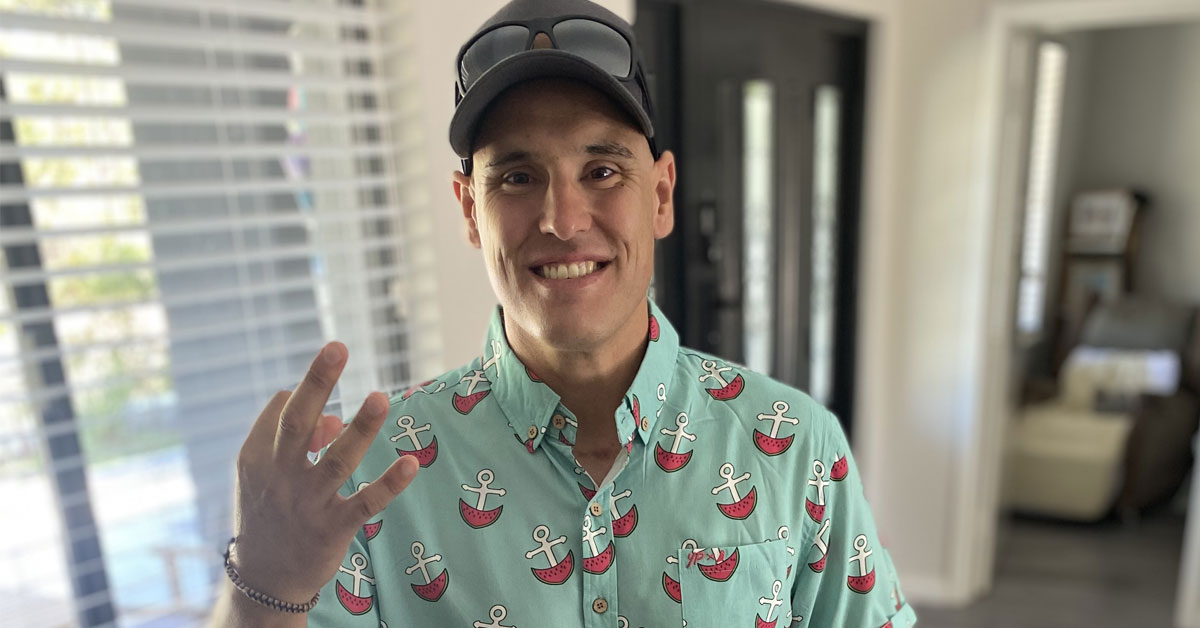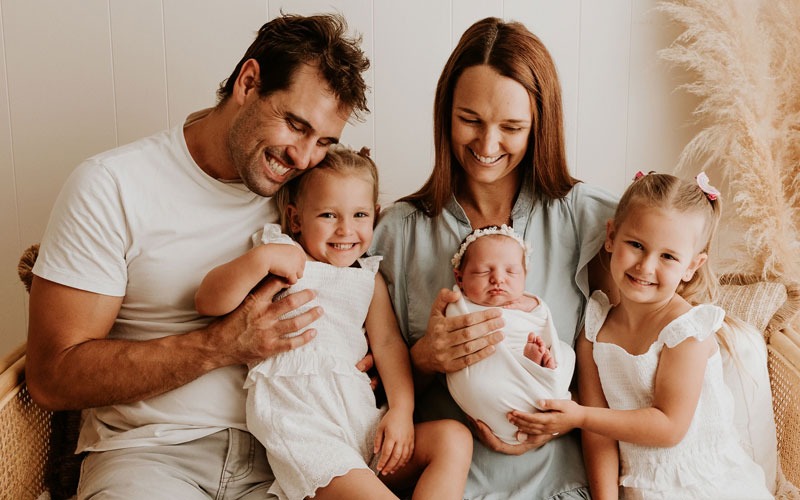

Stem Cell Donors Australia was formerly known as Strength to Give and ABMDR. Learn more.

Initially, Dayne brushed off symptoms like a swollen neck, fatigue, and dizziness, attributing them to work and stress. “Looking back, I had excuses for all the symptoms,” Dayne recalls. But after a scan revealed a large mediastinal mass, the family’s focus shifted dramatically. “We made the decision to induce Casey early so our daughter could be born before my treatment started,” he says. What should have been a time of celebration became a race against time to begin life-saving chemotherapy.
Over the next several months, Dayne underwent an intense chemotherapy regimen – what he calls his “nuking” – to target the lymphoma. While the initial treatment showed positive results, new tumours formed soon after. That’s when Dayne’s doctors recommended a stem cell transplant.
Stem cell transplants were a foreign concept to Dayne and his family before this experience. “Up until then, I had no exposure or information regarding stem cells as a potential treatment,” he says. Fortunately, Dayne qualified for an autologous stem cell transplant, using his own stem cells. The process involved another round of chemo, harvesting his cells, and weeks in hospital isolation. It was gruelling, but his care team and the support from family and friends kept him going.
One unexpected source of joy during his recovery was the small business he created: Flamin’ Mullet Coffee. What started as a hobby during treatments grew into something much larger as the local community rallied around him. Dayne handed out samples to the same people who had supported him through his toughest moments, helping him stay mentally strong. “It was about staying stimulated and setting small goals,” he explains. “For me, having a strong mind helps the body follow.”
By December 2023, just a year after his first chemotherapy treatment, Dayne was in full metabolic remission. His scans were clear. But in May 2024, just as life was beginning to return to some semblance of normal, he noticed a metallic taste in his mouth – an early warning sign of another relapse. A blood test confirmed it: the cancer had returned.
Throughout the ups and downs, Dayne has remained remarkably resilient. “For me, it’s always been about having a strong mind,” he says. His family has also drawn strength from their tight-knit community and the love of friends who rallied behind them, especially after Casey shared their story and encouraged loved ones to register as potential stem cell donors.
Dayne was able to use his own stem cells for his first transplant, but he knows that for others, finding a matching donor – whether a family member or an unrelated individual on the registry – could mean the difference between life and death. That’s why his wife, Casey, signed up to become a stem cell donor herself, inspiring others to do the same.
Although Dayne’s journey isn’t over, he remains optimistic. “It’s about creating as many loving memories with my kids as I can,” he says. One of his greatest joys is picking his daughters up from school and spending quality time with them, knowing how precious each moment is.
As Dayne and his family prepare for the next steps in his treatment, he reflects on how much this journey has changed them. “The day I was diagnosed was the day I became human,” he says.
Dayne’s message to his fellow Australians on the registry is simple: “Imagine if you could be someone else’s silent or secret hero.”
